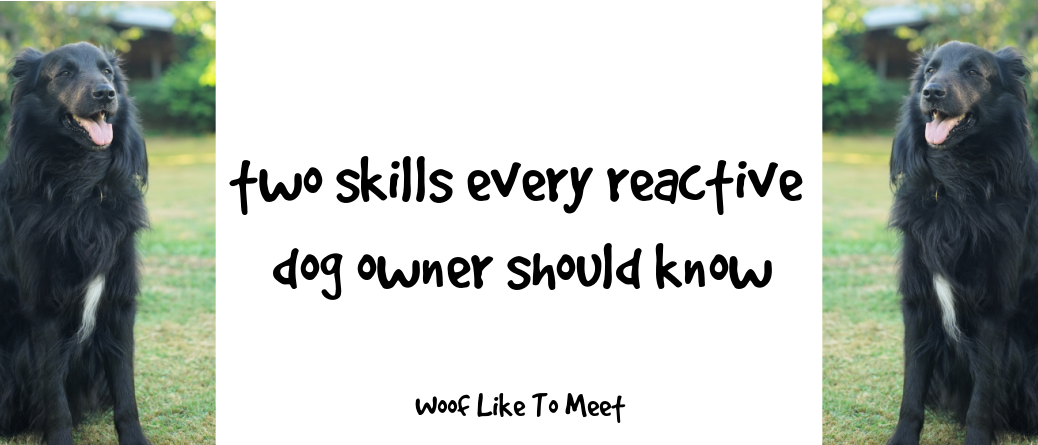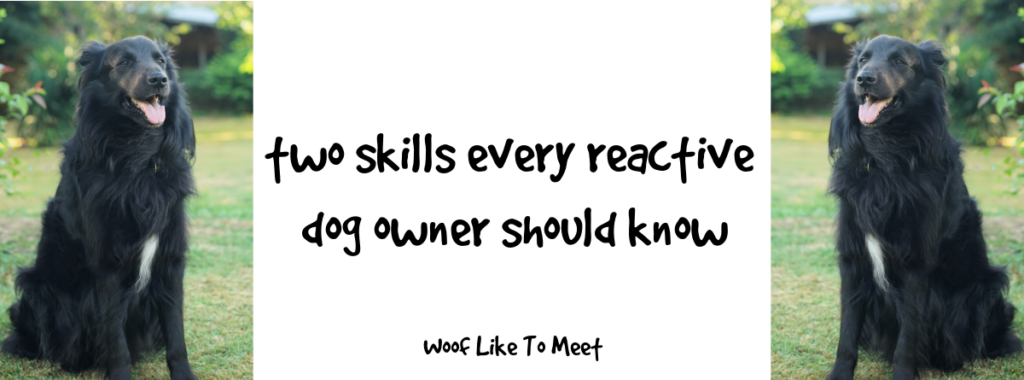
Over the last four posts, I’ve introduced you to the concepts of habituation, desensitisation and counter-conditioning. You’ve also had a proviso about flooding.
The limits of counter-conditioning are well-known. One of the limits is that you pretty much need to be doing counter-conditioning all the time to keep the pairing strong. Especially with emotionally salient stuff. You know, the things that make your dog fearful, reactive, agitated, annoyed.
Back to Ms. Knightley.
You remember me saying that if I wanted to get over my learned aversion to Keira Knightley, I’d need something good to reliably follow any sightings of the poker-faced one?
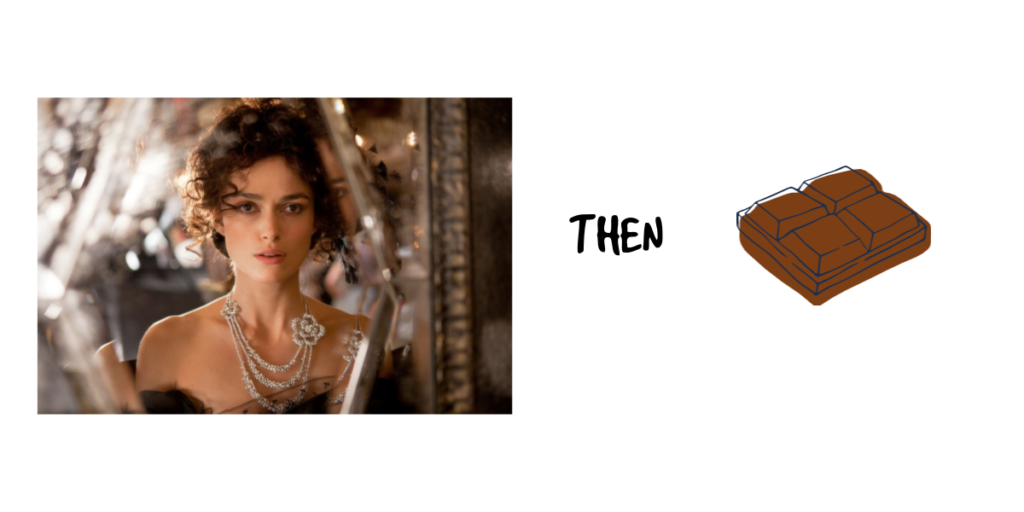
You remember me saying that the pairing needs to be reliable and proximal? That it needs to be a predictable vending machine that delivered within seconds of seeing her?
You also remember me saying that it needs to be gradual and planned? I need to start with a quick photograph of her looking her least offensive (to me)
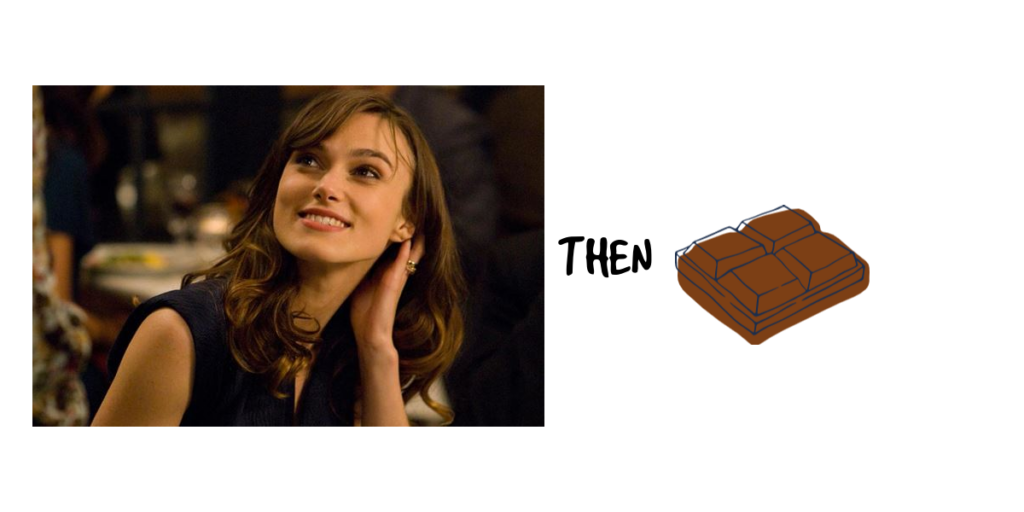
So smiley Knightley at a level I’m comfortable with, so the full-on grrrr response isn’t prompted, building up gradually to po-faced Keira, building up to a few seconds of Bend it like Beckham before building up to a few minutes of said film, before paring back to a few seconds of something mildly more likely to set off my puckered lips and clenched fists and only – only then – a few seconds, then minutes, then hours of Anna Karenina.
Honestly, I don’t think I’m ever going to build up to Pride & Prejudice but we have to know our limitations.
And systematic desensitisation programmes (like the gradual exposure I described to Mademoiselle Pouty Face) coupled with counter-conditioning programmes ( like reaching for a bit of chocolate) work. They work. No two ways about it. Next week, I’m going to give you some ways to make them work better. But they work. That’s the best thing about them. Slow and steady they may be. Magic bullets and panaceas they are not. But they work.
However, counter-conditioning relies on the pairing. It relies on Ms Knightly always being paired up with something yummy. And if she’s not? I’ll soon find myself avoiding her films or grimacing every time I see her. This is why we do need to revisit our dogs’ bêtes noires. In other words, don’t expect your dog to keep remembering the sudden appearance of scary stuff like cars and bikes and joggers and people and other dogs and men in flak jackets is a good thing unless you keep that pairing relatively fresh.
This is where we need trained behaviours. It’s also why trained behaviours don’t work if you haven’t done the emotional bit yet. I see so many people trying to train dogs when the dog isn’t able to cope with the situation. I don’t think humans should be judgey about animals not being able to cope. Try teaching 7-year-olds on a snow day (or a rainy day, or a windy day, or when it’s too hot, or when it’s too cold, or when there’s a bee in the classroom) and you’ll see humans aren’t much better. If you can’t manage being hungry without getting angry at people, don’t expect your dog to be able to cope with scary stuff and still remember how to sit.
The brain works on a first-come, first-served kind of basis. Brain stem stuff first. All the automatic stuff like temperature regulation and balance and being able to run if you see a car hurtling towards you. Then the limbic system – the emotional system. Finally, the outer bits, the rational stuff like executive function and rational behaviour and cognition and all that marvellous thinking that says , “No, silly! The postman doesn’t want to kill you!”
Until you’ve dealt with the emotional stuff, your obedience training will go to hell in a handbasket if you keep placing your dog in situations where they can’t cope.
“But he just won’t listen!” is more “But he just can’t listen!”
The big brain switches off in fight-or-flight mode because what use is the ability to perform advanced trigonometry if you’re being faced down by a rampant highway killer in a truck like the madman in Duel?
It’s not any different for dogs with their scary stuff – or their exciting stuff – or stuff that just takes their last bit of ability to cope. It’s literally a matter of life-or-death. That big brain thinking like learning and inhibition and rules and sits and not pulling on the lead just gets lost in the shouty amygdala saying, “What the actual F&$# is that? Bark, you muppet, before it thinks you’re afraid!”
What I advise my clients to do is train two behaviours: an L-turn and a U-turn. An L-turn is a 90° turn and a U-turn is a 180° turn.
Part of the problem is facing things head on. Dogs generally don’t, unless we make them. A scary-looking thing coming towards you straight on can only mean one thing: attack. I mean, you know this, right? A strange bull or a bear starts moving towards you in a straight line and you don’t think they’re coming in for kisses, do you?
But humans are strange in our fusion-fission behaviour and our ability not to fight with all the strangers we meet. And also to move in straight lines towards other members of our species. We split up, we come together. We split up, we come together. We manage crowds of thousands of people without bopping them on the nose or causing aggravation. We’ve forgotten what walking up to someone straight on feels like to other animals. In fact, if we did like other animals and took our time or stood our ground or hid, then people would think we were very weird indeed. We forget that strangers moving in a direct line towards us probably have the worst intentions. Until, that is, a bull starts running towards us. Then we remember somewhere back in our primal brain that this Not A Good Thing.
We’d never see most animals being able to do this for example:
I mean all that walking confrontationally up to one another is beyond the scope of most other animals we share the planet with. Especially in these numbers and keeping our cool like Morpheus. But most people aren’t ready to understand that yet.
L-turns help you get out of the way, particularly if U-turns are not an option, or if you just want to politely let stuff past that doesn’t have bad intentions. You turn to the side, you get out of the way and you wait until they’ve gone past before resuming.
U-turns can be temporary or they can be permanent. Only humans think stubbornly that we absolutely must get past by going head-to-head and we can’t possibly take a couple of minutes to make the situation a little easier. Teaching your dog L-turns so you can get out of the way temporarily, or U-turns so that you can move away completely, are really useful. L-turns tend to be shorter – just a few paces out of the way of the scary oncoming stuff. You can add a sit or a stand or a watch me or something else if you like. The more reactive your dog and the less training and practice you’ve done, the further that L-turn will need to be. Eventually, you’ll get to the point where your L might only be a metre or so out of the way of oncoming stuff.
A u-turn might be much longer or bigger. It might just be a way to get you into safety. U-turns are also good practice for loose-lead walking too.
A hand touch or watch me are really helpful when you’re changing direction. You can use these to move your dog and to prompt a turn to the side or a u-turn. You can also teach a ‘Let’s go!’ and do that as either a 90° turn or a 180° turn.
You can see me playing around with Lidy here, using touch to keep her at my side and to change her direction on the move. You can see me stringing together three touches for one treat as we’ve been moving away from 100% reinforcement, which is why we’re practising in a small space. Really, it’s just all about engaging with me and moving around me. A “middle” can also be a fun behaviour if your dog likes doing it – Lidy does, which is why I gave her food for doing it unprompted. I like her throwing out behaviours sometimes – it lets me know the things she likes doing or finds reinforcing. You’ll also see her avoid my hand twice when I don’t cue her with “touch” – that’s purposeful too. We’re just playing around here whilst I was making a drink. 2 or 3 times a day, we do a short two-minute burst in various places around the house. We’re sloppy – it’s fine. We’re not in robot mode.
You can also use a hand touch then to prompt a “Let’s go!” like this video here.
You start teaching these in the comfort of your own home, in the kitchen or living room, in a safe space like I was doing with Lidy. Then you add a bit of challenge, taking it to the next safest space, using leads if necessary. Planning in your training so that you’ve practised these a gazillion times in a gazillion gradually more complicated situations is vital.
What also helps is finding screens. Screens are things that just disrupt or break up the whole “I’m coming for you!” head-on walk.
Today, I got to use both the L-turn and the U-turn in real life. No barking, no lunges, no pulling, no dogs overwhelmed, no shouting, no frustration, no eyeballing. I didn’t end up being dragged along and my dogs didn’t show me up. Hoorah.
Let me tell you how it happened…
So the wheat and corn fields have just been harvested round my way, so we have miles and miles of farm tracks and empty fields. Usually, walks are pretty uneventful on the one I chose – little wildlife, no cows, no traffic, no dogs, no people. Today, the world and his wife decided to take advantage of the sunshine and cool temperatures.
So, the scenario. 550m farm track with an empty field on one side and a fenced field on the other. I’m walking my two dogs – 55kg between them and more than enough to pull me over. One is fine with other dogs but she’s less tolerant of poor greetings with unfamiliar dogs as she ages as her old bones are leaving her grumpy. The other is super-excited to see other dogs, also compounded by shepherdy genes (in-group, good; out-group, bad) and some territorial behaviour and also by my own lack of proper experience when he was young. We are what we are. Mostly okay. Probably as sloppy and casual as the video with Lidy – fine for us both. We’re not machines.
We were about 150m up the track when I saw a couple with an off-lead dog turn onto the track from the top end, heading towards us. They were about 400m away at that point. I see the couple walk on about 100m or so, and I’ve tentatively done the same. The path is about 2m wide, max. Also, we’re all still social distancing and I don’t have a mask. There’s no real sense of anything at all to screen us. I can’t get into one field because of the barbed wire. The other field is just stubble. If I turn around and walk back, Flika will struggle. We’re already walking at about 2.5km/hr for those old bones. She also hates u-turns with a passion. No doubt the people will catch us up and I’ll have added another half kilometre on to our walk if I back up to the safest passing point. If we can even get there before they catch us.
So I decide to make for a small hay bale. It’s just off the path, about 4 or 5m or so. It’s not going to block the dogs off from each other completely, but it means I avoid 150m of collective eyeballing and posturing and discomfort. I can see the couple are agitated and slowing, speeding up – you can see them making the same decisions I am. Are these dogs safe to pass?
Heston, Flika and I have a “Let’s Go!” and we make an L onto the stubble.
We veer off into the empty field, and I use the hay bale to break up the arrival of the other dog a little.
It’s not massively off the path – just enough. I’m not avoiding the other dog, just letting them pass. The hay bale is low but breaks up the sight-line. It’s enough. Heston is so used to this process that he automatically goes into “Look At That!” mode as soon as I say “Where’s the dog?”
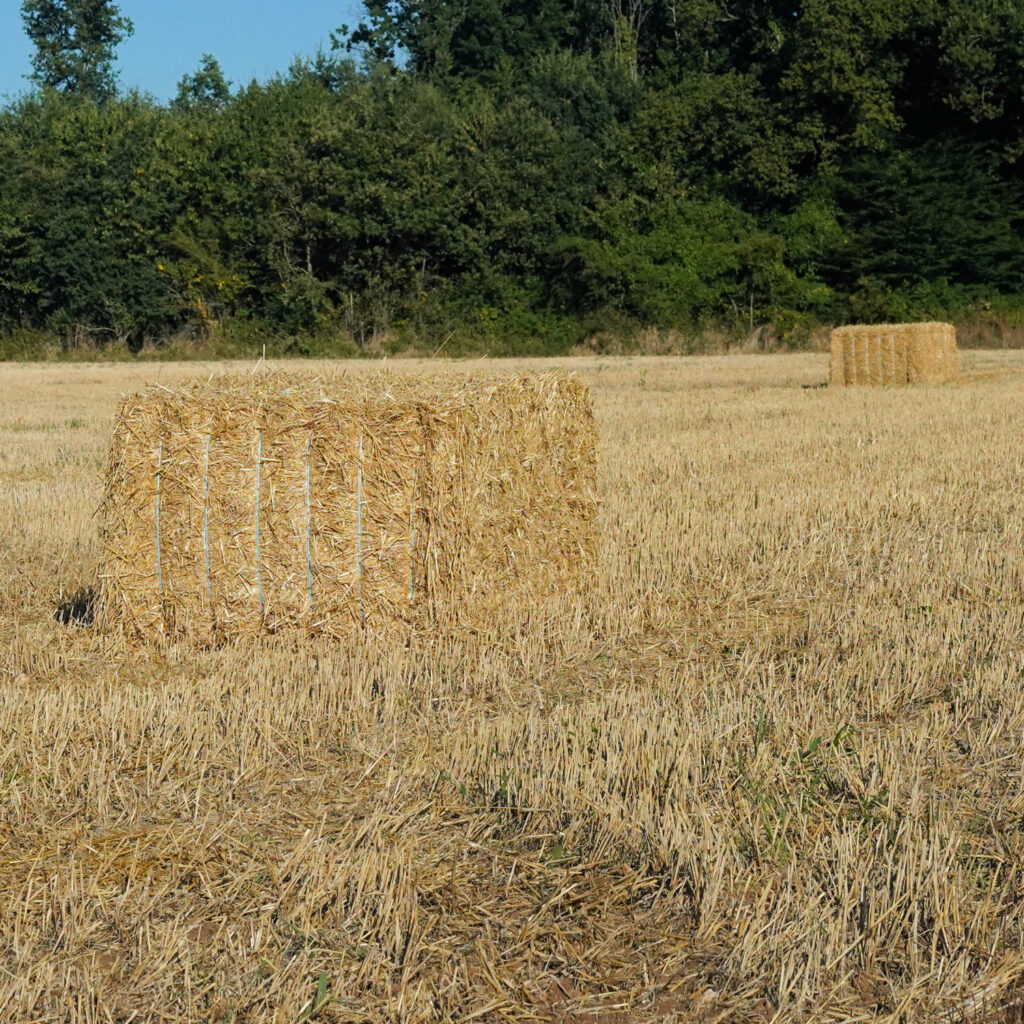
We watch the dog go past – a very fine malinois, which I feel obliged to add just because you know my feelings about these mighty dogs – and his owners are relaxed, their dog is relaxed, Heston is relaxed, I’m relaxed. Flika doesn’t even notice there is a dog.
And they walk off down the track.
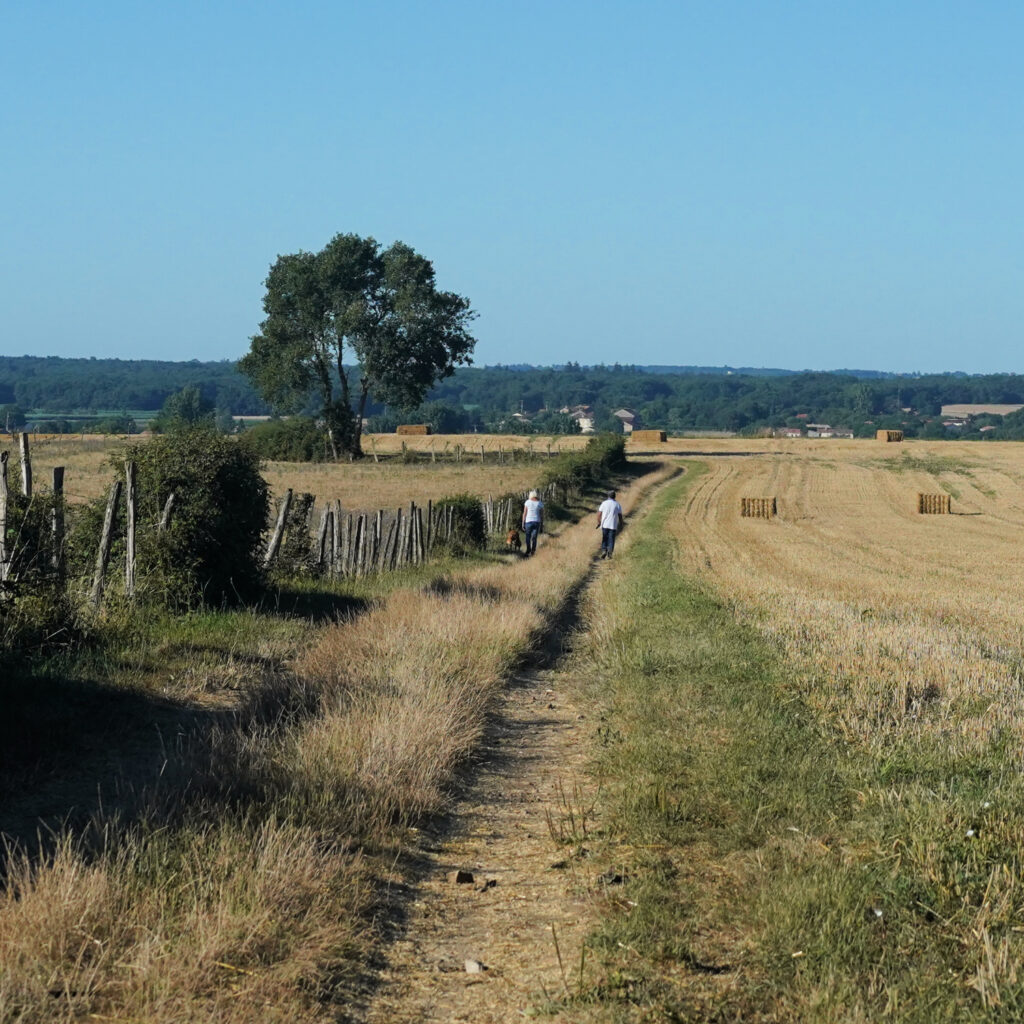
Just one example of using a number of taught behaviours to help manage a potentially tricky situation. I don’t know those lovely, polite people and their very handsome boy, but from their stop-starting, I reckon they felt like I did.
That L-turn along with a couple of other taught behaviours are perfectly possible when dogs aren’t overwhelmed by emotion and when it also promotes safety and good canine communication. My two immediately went back to much nicer ways of gathering information about strange dogs: sniffing where they’ve been.
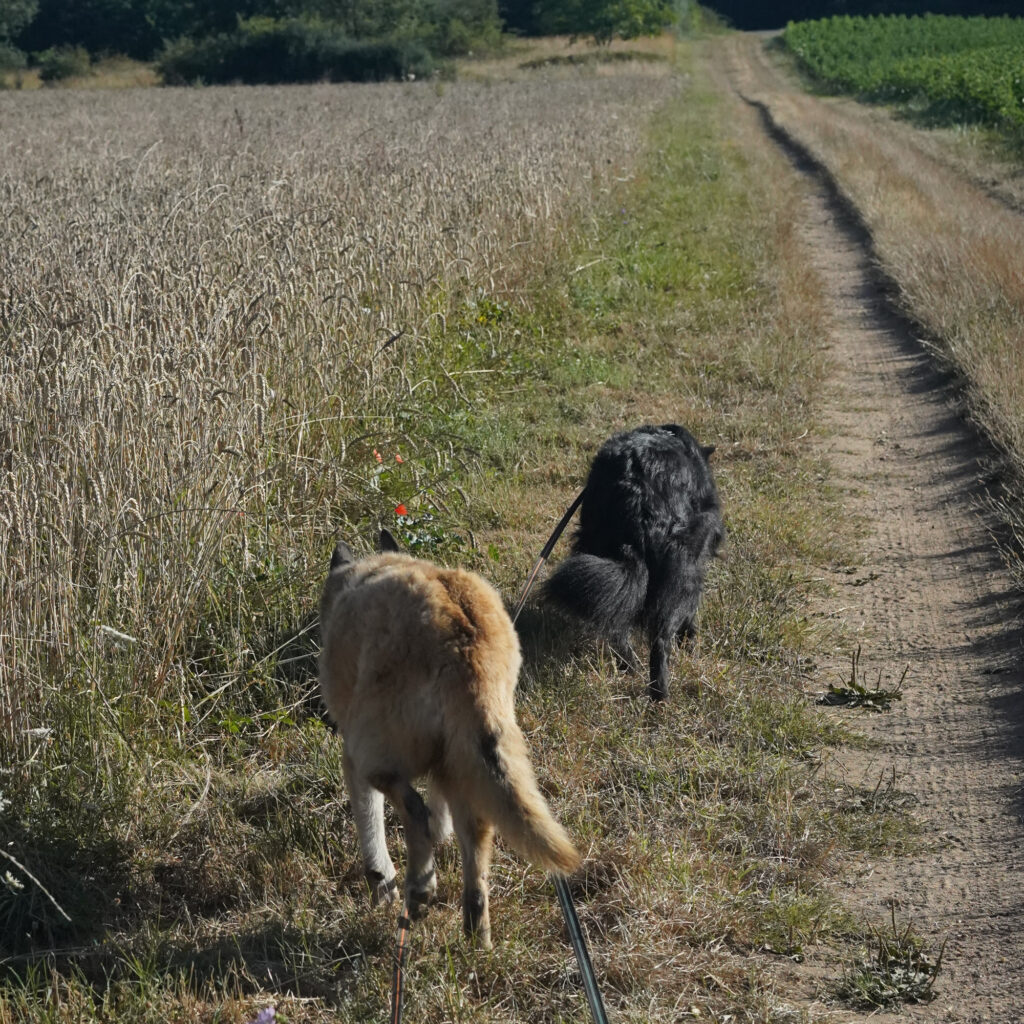
What I knew, though, was that we were on a circuit. I was going anticlockwise and they were going clockwise. We had another passing to get through. I knew, too, that it was going to happen on a blind bend. Because, sod’s law, of course it was. No matter how slow or fast I went, or how slow or fast they went, that blind bend was inevitably going to be our Waterloo.
I knew it was coming though, so I started practising Heston’s heeling, got us to a space where I could do a U-turn and they could pass safely, and all the dogs and all the people escaped without pulses being raised. Of course it happened on the blind bend. But because I knew it was coming, all the shepherdy shoutings and bargings and inappropriate greetings were nicely avoided.
L-turns and U-turns using hand touches or other focused behaviours can be a real life saver. Teaching other things like watch, engage-disengage or “Look at That!” alongside are the most useful life skills your dog can possess if the world freaks them out. Remembering that everything moving in a straight line towards you probably feels like Keira Knightley riding an angry bull as far as your dog is concerned can really help. Some dogs deal with this by flirting and fidgeting, or by over-the-top friendly behaviours (Flika normally does). Some dogs deal with this by feeling like they want to run away. Not so easy on a lead. Other dogs like to shout and engage in a bit of noisy, big behaviour to say “Go away! I Mean Business You Big Scary Things!”
Giving them the ability to step off the track, to get out of the way, to find safety is vital. Not easy to do in places where dogs are not on leads. Some of our French hunting dogs pop up from time to time, but in general their social skills are so refined and they meet so many dogs that they don’t engage in poor behaviours. They’ve been bred for fusion-fission, as have some gundogs. Hence, the off-lead viszla we often run into is happy to just keep barrelling past us as long as we step out of her way. We’re just doing our thing. She carries on doing hers.
I know, however, that there are far too many people who let their dogs off-lead who would run up to other dogs, particularly those on leads, and honestly, I avoid places where people do this. Parks and beaches are not my scene. If you’ve got a reactive dog and you’re trying to work with them when dogs keep running up to them, then your progress will be much, much slower. Your dog may eventually be able to cope with this nasty habit eventually – both Heston and Flika can if I don’t ask it of them all the time and the dog is flirting/over-friendly rather than aggressive – but don’t expect them to be able to do it when they’re still a novice.
I’ve found these L and U turns can actually resolve a lot of problems with other dogs running up to us as well. Once dogs see that you’re not interested and you’re walking away or you’re not even engaging with them, a good number of well-socialised dogs will take that as their cue to disengage. I don’t like putting it to the test, but where I have, the whole process has worked really nicely. I find places with occasional traffic to be much more likely to have dogs on lead rather than off, as well. Roads are your friend. You may need to do some work around moving vehicles first, but that opens up a whole load of options for you.
Moving to learning like this, where you ask for a behaviour, like “Let’s go!” and where your dog’s big brain is still maintaining a modicum of control over the emotional bits means also you can switch to a less food-heavy schedule, or that you can start to use safety and distance as reinforcers as well. Two crossings today cost me 10 biscuits for 2 dogs.
How to teach a hand touch:
How to teach watch me:
I confess, there were a lot of kissy noises this morning!
How to teach Look at That:
Teaching turns and pivots can also really help
Just remember to teach these behaviours at home, in the garden, in quiet places, in non-challenging areas and then in areas of increasing complexity. What you don’t want is your dog realising that treats and training only happen when the scary stuff is present, as it can become a massive cue that the scary stuff is about to arrive. I only used ten biscuits on this training because we practised a bunch of other stuff on our walk too.
I guess what it boils down to is avoiding head-on confrontations when you can’t 100% guarantee that both dogs can cope with it. Teaching behaviours you want to see when this happens – like L-turns and U-turns – needs to happen out of context and a very large number of times if you want it to be reliable out in the real world. Do those two things and you’ll find your dogs can cope with whatever the world throws at them.
If you’re really stuck, find a good force-free trainer to help you with these behaviours. You will probably find Grisha Stewart’s excellent Behaviour Adjustment Training 2.0 an absolute must-buy. If you’re looking for something more involved and you’re fairly comfortable training your dog yourself, the Fenzi Dog Sports Academy has two courses by the most excellent Amy Cook: Dealing
with the Bogeyman, and Management for Reactive Dogs. Whenever I’m working with reactive dogs, I’m not doing much differently than these. Amy has some particularly nice videos on her course for L-turns and U-turns as well as a whole load of other taught skills that are super helpful for people who have really challenging dogs.
Next week, I’ll be looking at stimulus gradients – ways to make learning easier for your dog.

